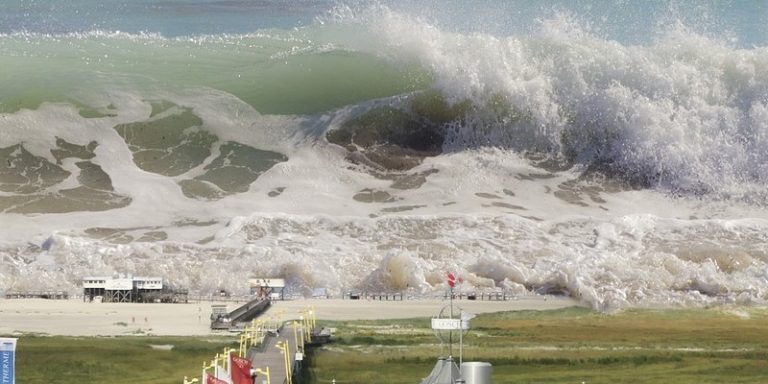
In 2011, a tsunami occurred off the coast of Japan. The toll was severe: 15,897 dead, 2,534 missing, 6,152 injured and 139,000 refugees. It even caused an accident at the Fukushima nuclear power plant. Ten years later, Fujitsu Laboratories, with the help of RIKEN, Tohoku University and the University of Tokyo, have developed an AI model that will give disaster management teams a real ability to predict tsunami floods.
A rethink of tsunami prediction
During the 2010s, when people wanted to predict a tsunami, they had to compare the data received during the current warning with an existing database. The models that most closely resembled the information obtained were able to predict with relative accuracy the severity of a tsunami in coastal areas.
The Japanese tsunami of 2011 revealed that many problems remained in the acquisition and use of information for effective and safe evacuation in case of disaster. The above technique is very good but relies on the performance of supercomputers that analyze the current situation from scratch with data from earthquakes or tsunamis that have already occurred.
There are two concerns about the application of this technique: first, the concern about databases. Tsunamis caused by earthquakes are not frequent events. Databases from past events are not as extensive as necessary to make perfect comparisons with data from a situation occurring at time T. The second concern is related to the supercomputer used. The better the supercomputer is at simulating and modelling earthquake and tsunami models, the better it will be at defining the areas affected, the time at which water will reach the coast, and how severe it will be.
The Fugaku supercomputer and the use of AI for tsunami prediction
To solve these problems, Fujitsu, RIKEN, Tohoku University, and the University of Tokyo worked together to develop AI technology dependent on the Fugaku supercomputer and capable of instantly predicting tsunami flooding.
The prediction process is then done in two steps, one upstream and one downstream, to perfect the results. Several tsunami simulations were conducted using Fugaku to populate the databases of the AI model designed by the researchers. In the event of a real earthquake, inputting the tsunami wave series observed offshore into this AI model will allow prediction of inundation conditions in coastal areas before impact.
<img class=”aligncenter wp-image-26991 size-full” src=”https://www.actuia.com/wp-content/uploads/2021/04/Schema-1-Fonctionnement-du-modele-dIA-pour-les-tsunamis-e1618818109610.jpg” alt=”The AI model allows using previously made models to predict the strength of a tsunami.” width=”892″ height=”416″ />
The AI model is therefore used to increase the resolution of the inundation conditions previously estimated by the simple analysis of the tsunami wave results. The final results are refined and allow to deduce more precisely the affected areas and how deep the water will flow into these areas.
<img class=”alignnone size-full wp-image-27001″ src=”https://www.actuia.com/wp-content/uploads/2021/04/Schema-2-Differences-entre-une-prediction-avec-danciennes-bases-de-donnees-et-grace-au-modele-dIA.jpg” alt=”Using an AI model helps refine the results.” width=”831″ height=”338″ />
Eventually, the researchers hope that with further training of the AI model with Fugaku, or with a new, more powerful AI model, tsunami and flood predictions can be made over much larger areas.
Translated from Le supercalculateur Fugaku et un modèle d’IA au service de la prévention d’inondations dues aux tsunamis









